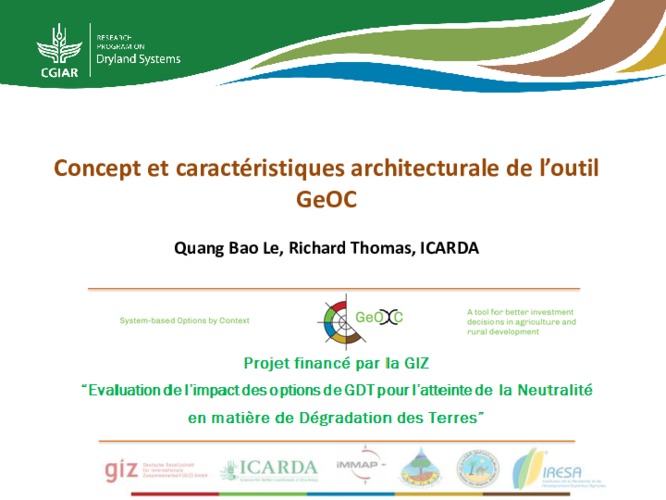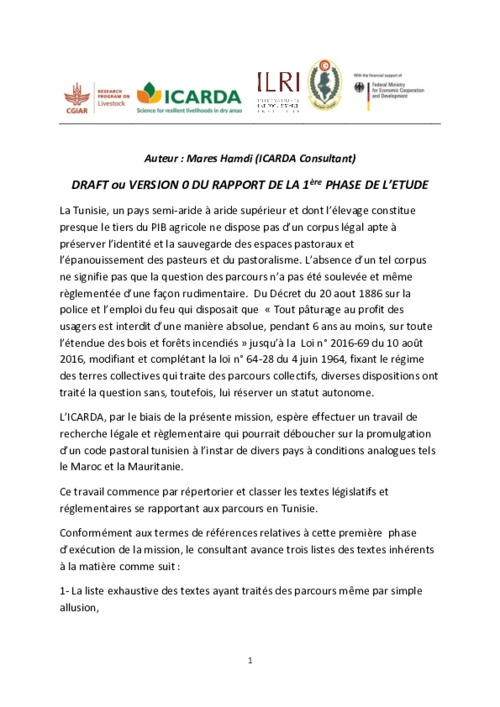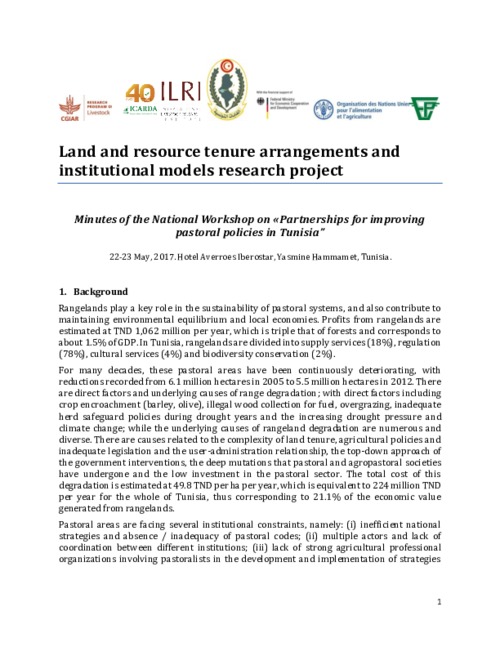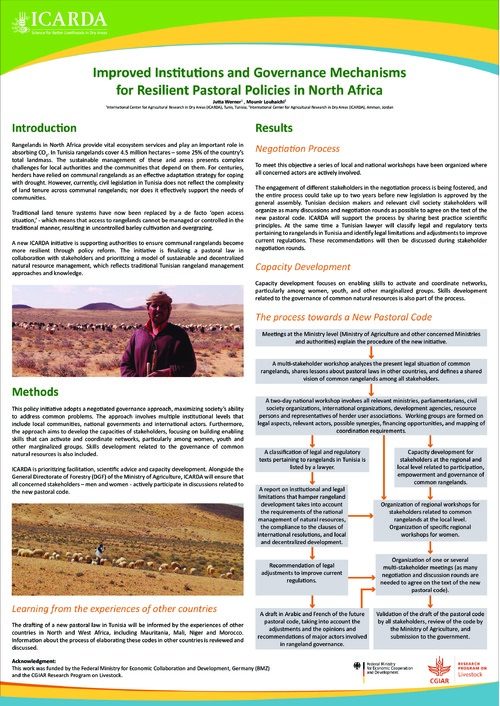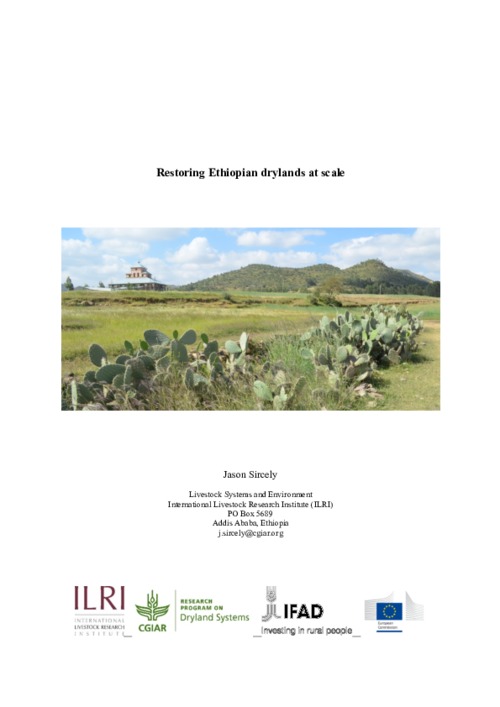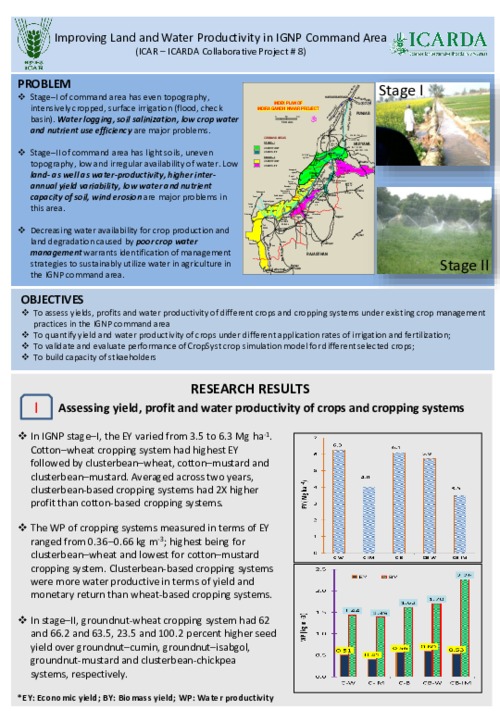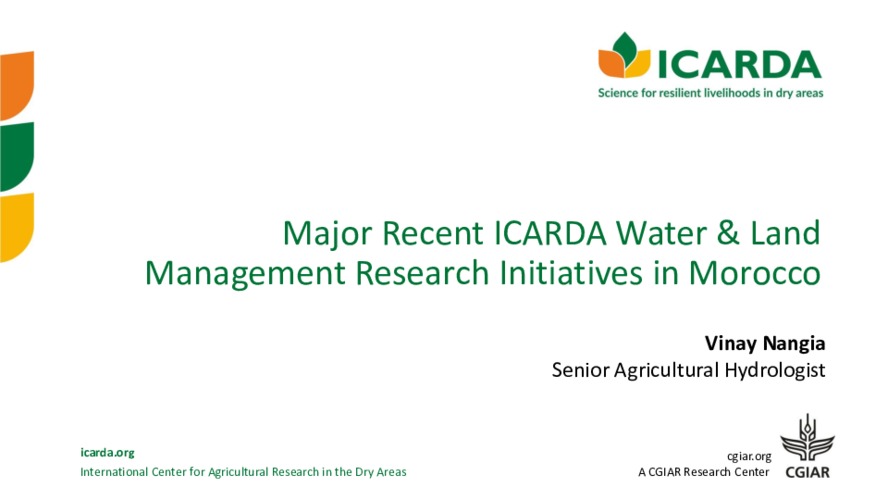Concept and design of GeOC tool
This presentation presented the concept and design of the GeOC tool. This presentation comes under the introductory session of the training "Sustainable Land Management Options by Context: Approach and Geospatial tool to support Achieving Land Degradation Neutrality”, held in Zaghouan on 16-17 March 2017.

